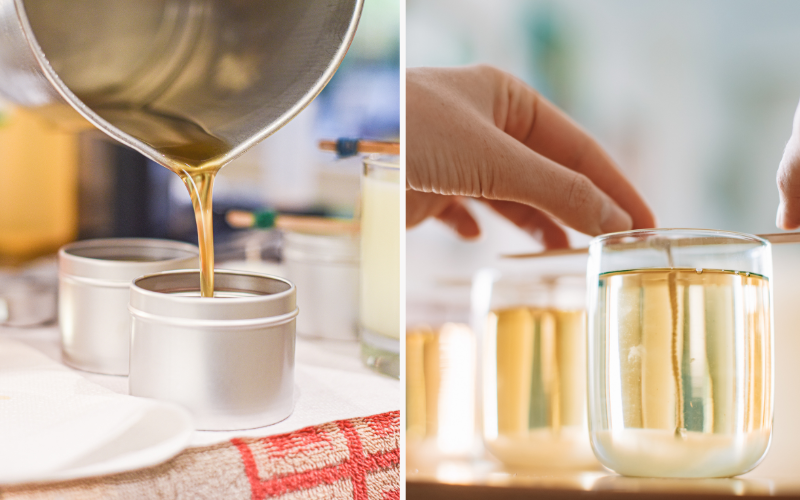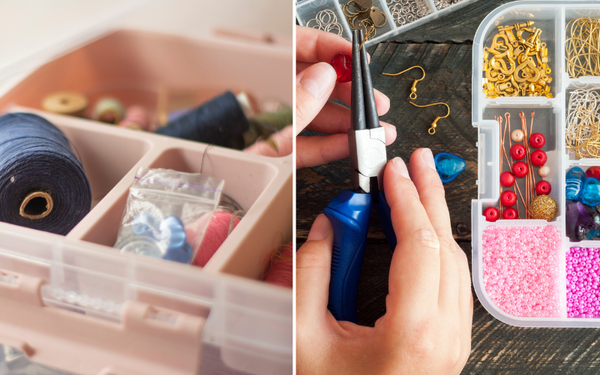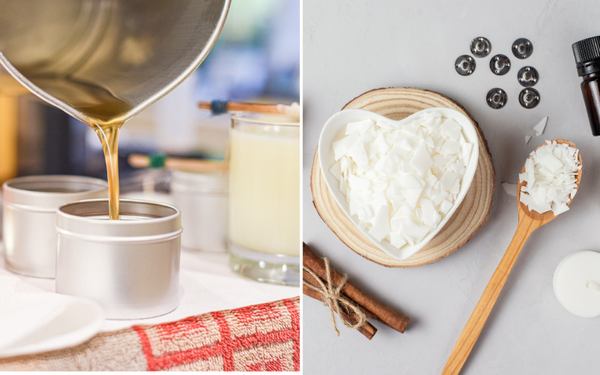What is the 84 Candle Rule? Simplified, it’s a formula for perfection in candle making. Create 84 candles, share them freely, and use the feedback to polish your expertise. Tailored for both artisans and future business owners, it lays the framework for skill mastery and a deeper understanding of the consumer market. This article delves into how the 84 Candle Rule can set the stage for a profitable candle enterprise.
Key Takeaways
- Master candle making before launching a business by crafting and giving away 84 candles to gain hands-on experience and valuable feedback, as recommended by the 84 Candle Rule.
- Choose the right materials and techniques to ensure your candles meet quality standards; this includes selecting suitable waxes, wicks, and fragrances to craft candles that align with your business vision and consumer needs.
- After making 84 candles, shift your role from hobbyist to entrepreneur by devising a comprehensive business plan, establishing an online presence, and employing marketing strategies to sell your uniquely crafted candles.
Unveiling the 84 Candle Rule
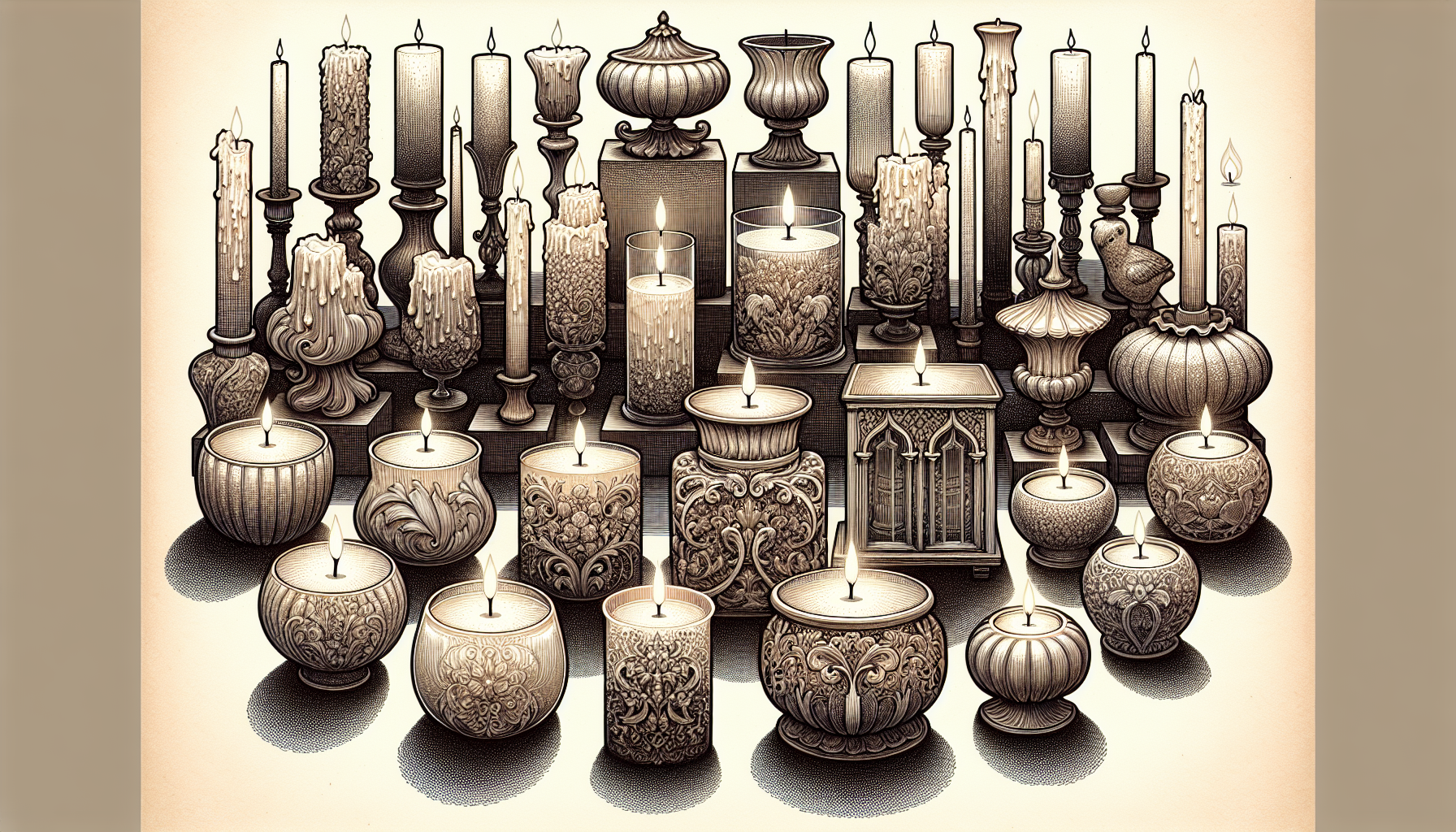
A spiraling journey of mastering the art of candle making, the 84 Candle Rule is a structured guideline that emphasizes the importance of skill development before venturing into a candle business. Think of it as your personal candle making kit, designed to guide your journey from a beginner to a professional candle maker. The idea behind this rule is simple yet profound: create 84 candles and give them away. Yes, give them away for free!.
This unconventional approach does more than just hone your candle making skills. It helps mitigate the risk of stress and burnout by shifting your focus from the pressures of selling to the joy of giving. As you distribute your candles freely, you gain valuable insights and feedback that shape your future candle production. This rule is your first step towards mastering the candle making process and becoming a significant player in the candle industry.
The Origin and Rationale Behind the 84 Candle Rule
The 84 Candle Rule was birthed by the Armatage Candle Company, aiming to nurture beginners in the art and science of candle making, including pillar candles. The number ‘84’ isn’t arbitrary. It represents a significant trial number for you to gain confidence and master various aspects of candle making, such as:
- scent
- color
- burn quality
- wick selection
- container selection
- fragrance load
- wax type
By making and testing 84 candles, you will have a solid foundation and understanding of the craft.
The rule encourages giving away candles and soliciting feedback, which is essential for continuous improvement and fine-tuning your product. As you progress in your candle making journey, each piece you create becomes not just a candle, but a unique story of learning, growth, and generosity.
Step-by-Step Breakdown of the 84 Candle Rule
Now that we’ve unveiled the 84 Candle Rule and its origins, let’s embark on the journey of mastering it. The first step is selecting your wax type from various candle types like:
- paraffin
- soy
- beeswax
- coconut wax
This decision will influence the final outcome of your candles, so choose wisely. The next phase requires you to roll up your sleeves and create. Craft 84 candles, focusing on mastering the fundamental techniques required in the craft.
The giving phase is where the magic truly happens. As you give away your candles, you familiarize yourself with the candle-making process, test different formulas, and build a consumer feedback loop. This feedback is the secret ingredient for refining your candle making techniques and improving your formulas. It’s your compass guiding you towards mastery and preparing you for the candle business.
Planning Your Candle Making Journey
The journey of a thousand miles begins with a single step, and in candle making, that step is choosing the right wax type. Options like paraffin, soy, beeswax, and coconut wax each have different properties and uses that can influence your candles’ outcome. Factors to consider include the melting point, scent throw, and burn time. Your choice of wax is a significant decision that aligns with your business objectives.
Remember, you’re not just starting a candle business; you’re also embarking on a creative journey. So, let your intuition guide you, experiment with different waxes, and find the one that resonates with your vision and the needs of your target market.
Execution: Crafting Your Candles

Crafting candles is where your vision takes tangible form. As you create your 84 candles, focus on mastering the fundamental techniques. Experiment with different formulas and incorporate elements like coconut wax to slow the burn time and improve scent throw. Test batches play a pivotal role in determining fragrance strength and how it performs when burned.
Remember, the journey to your 84th candle is a learning curve. Each candle you create is an opportunity to refine your skills, understand different waxes, wicks, and fragrances, and truly embrace the art of candle making. Embrace the process, and don’t be afraid to make mistakes. After all, every candle you make brings you one step closer to becoming a master candle maker.
Reflecting on Each Batch
Once your candles are crafted and given away, it’s time to reflect. Keeping a journal of customer feedback is essential for refining your candle making skills and understanding customer preferences. Here are some steps to follow:
- Record customer reactions to different batches.
- Adjust aspects such as scent strength or color based on customer feedback.
- Tailor your product to suit customer expectations better.
By following these steps and visiting your local craft store, you can improve your candle making skills and create products that your customers will love, ultimately growing your candle making business and allowing you to successfully sell candles.
This feedback loop is your guide, illuminating the path towards creating candles that not only embody your vision but also resonate with your customers.
Benefits of Following the 84 Candle Rule for Your Business
The 84 Candle Rule isn’t just about crafting candles; it’s a comprehensive strategy for your candle business. It encourages the maintenance of a consistent and focused product line, a crucial aspect of quality assurance before expanding your business. Launching a limited array of fragrances and regularly introducing new scents not only attracts customers but also facilitates the collection of valuable feedback, directly affecting customer satisfaction.
Moreover, the rule allows for effective risk management by preventing overextension and maintaining a high-quality product as your business grows. Following the 84 Candle Rule, your candle making journey becomes a strategic business endeavor that combines skill development, customer engagement, and effective risk management.
Tools and Supplies You'll Need to Start
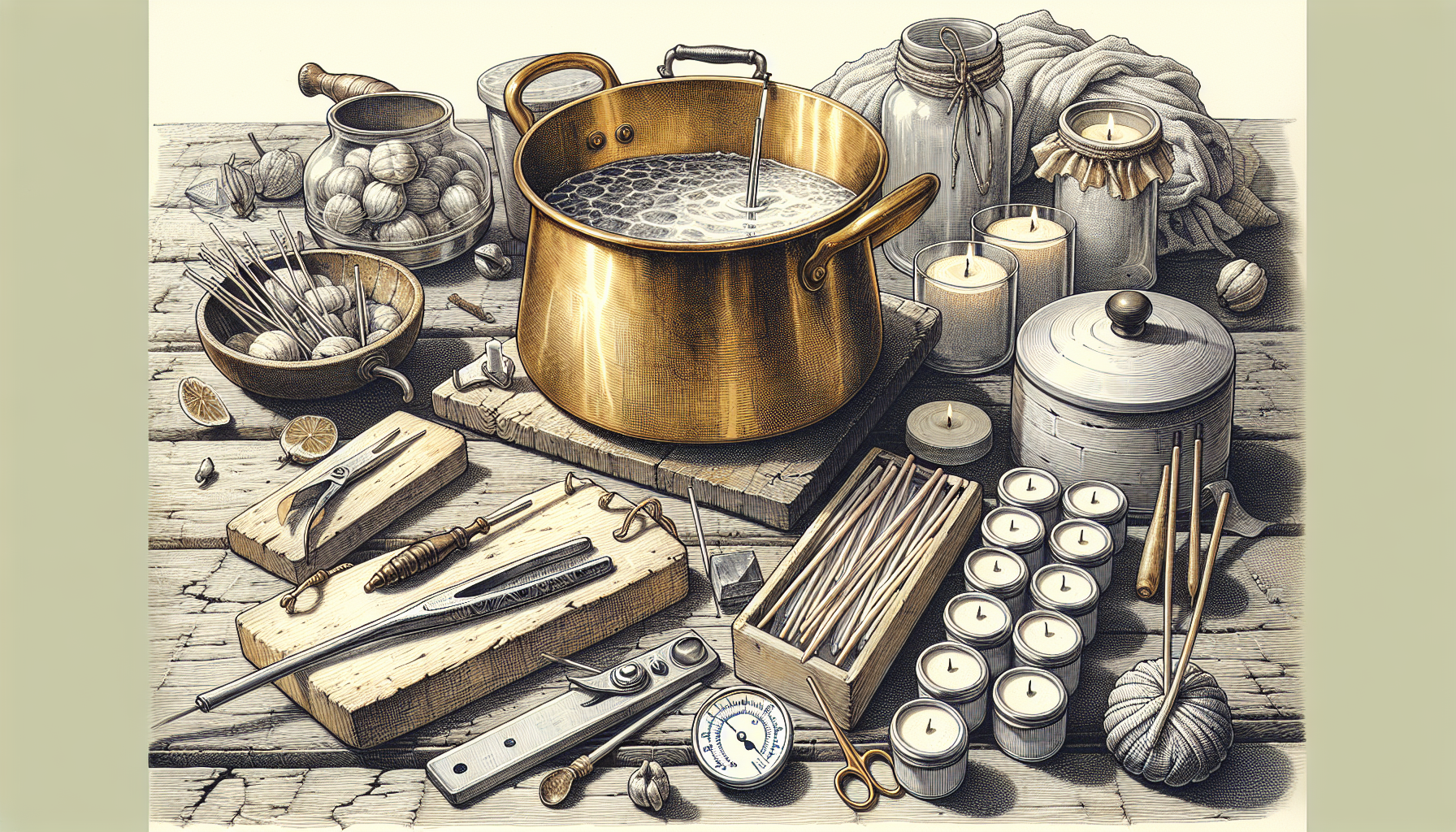
As you embark on your candle making journey, you’ll need to equip yourself with the right tools and supplies. This includes basic items such as pots for melting wax, heating surfaces, quality wicks, and containers for the finished candles. A comprehensive candle making kit may include items like a thermometer, a double boiler, a scale, mixing utensils, wick holders, a wick trimmer, and protective work surface coverings. To make things easier, consider investing in one of the many available candle making kits on the market.
Choosing the right containers for your container candles, like glass jars, ceramic, or tin, is crucial for ensuring safety and maintaining the quality of the final product. Don’t forget to keep supplies like isopropyl alcohol and paper towels on hand for proper cleanup and maintenance of your workspace after making candles.
Selecting the Right Wax and Wicks
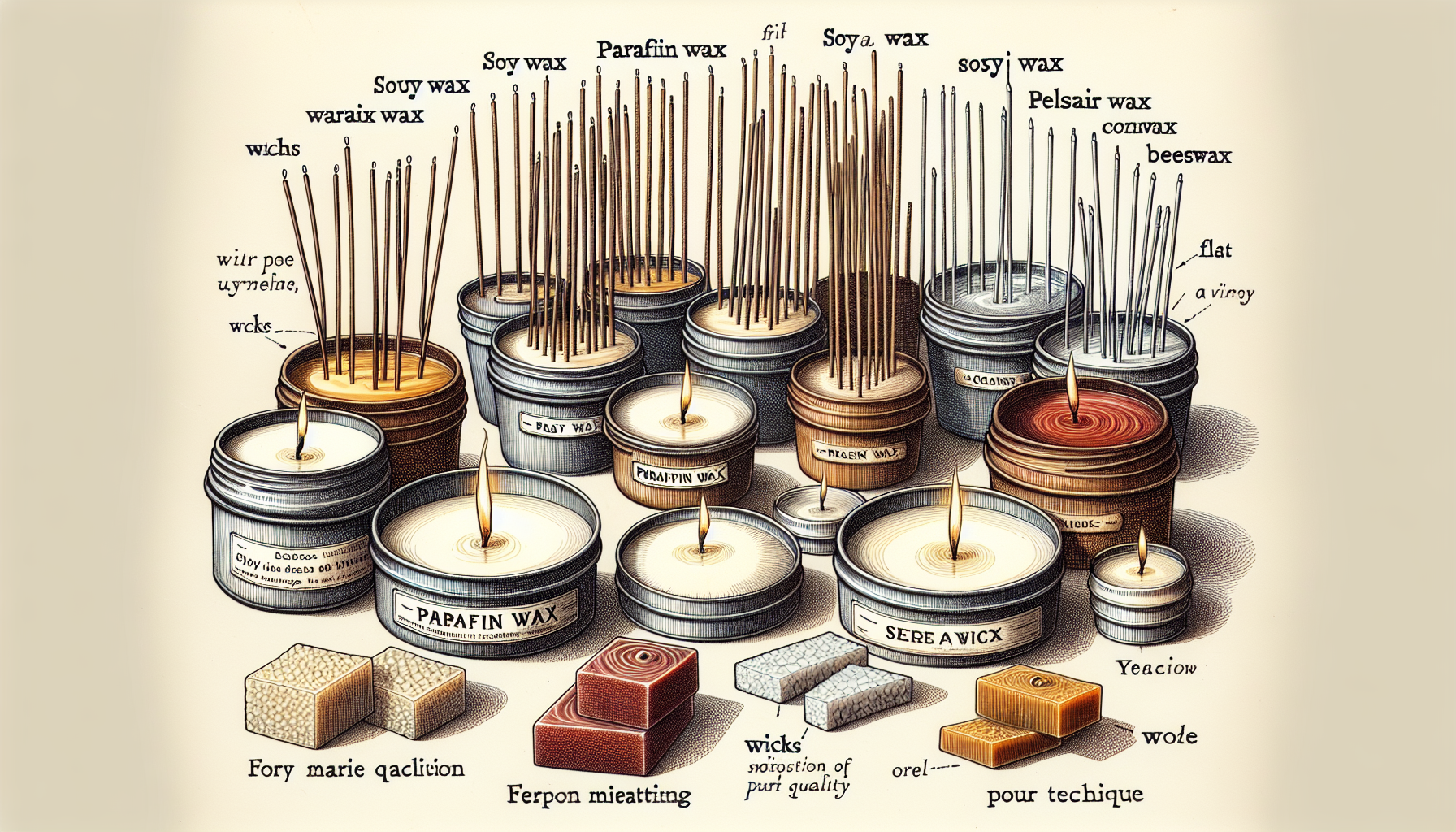
Selecting the right wax and wick for your candles is a critical aspect of your candle making process. Here are some options to consider:
- Soy wax: 100% natural and has a long burn time
- Beeswax: offers the longest burn time with minimal dripping and smoke
- Coconut wax: known for its clean burn and sustainable vegan options
- Paraffin wax: holds strong colors and fragrances
Your choice of wick should match the size of the container, with options like cotton and wood wicks influencing the burn quality. As you create your 84 candles, experimenting with different waxes and wicks will give you first-hand experience on how these components influence the burn time, scent throw, and overall quality of your candles.
Fragrance Oils vs. Essential Oils
When it comes to infusing your candles with a delightful aroma, you have two main options: fragrance oils and essential oils. Fragrance oils are synthetically made to mimic a specific scent, from a fruit to ‘fresh linen’. On the other hand, essential oils are derived from plants and carry the natural scent of their source.
While fragrance oils are cost-effective and produce a stronger, longer-lasting scent, they can cause allergies in some people and are not considered ‘natural’. Essential oils, on the other hand, provide therapeutic benefits and are marketed as a natural product, appealing to health-conscious consumers. However, their scent is milder and may not last as long when burned compared to fragrance oils.
The choice between the two boils down to your brand ethos and target market preferences.
From Hobbyist to Entrepreneur: Transitioning After the 84th Candle
Once you’ve crafted your 84th candle, it’s time to transition from a hobbyist to an entrepreneur. This is where you start a candle business, beginning with a business plan that establishes a vision, defines your target market, outlines your goals, operations, financing, and competitors.
Crafting an effective online candle store with a clear brand strategy, unique product offerings, and a compelling visual identity is crucial to stand out in the market. A simple and memorable business name facilitates word-of-mouth marketing and brand recall. Developing a brand story that is captivating, honest, and connects on an emotional level can encourage buyers to support your candle business. Now, you’re not just selling candles; you’re selling an experience, a story, a part of you.
Marketing Strategies for New Candle Makers

Now that you’ve transitioned into the entrepreneurial world, it’s time to hone your marketing skills. Here are some key steps to take:
- Identify your ideal customer profile to tailor your content and campaigns.
- Select the right social media platforms to reach potential customers.
- Build a diverse content strategy that includes both promotional and educational posts to boost engagement and interest in your products.
Platforms like Instagram and Pinterest are valuable for showcasing your products and targeting home decor enthusiasts, respectively. Engaging with followers by sharing behind-the-scenes content and through online giveaways fosters a sense of community and brand loyalty. Consistently executed marketing plans and targeted social media campaigns can increase your brand visibility and audience outreach.
Building an Online Store
In today’s digital age, having an online store is no longer optional; it’s a necessity. Platforms like Shopify enable you to create an eCommerce store without requiring extensive coding skills or a large budget. A user-friendly online store with easy navigation, high-quality product photos, and detailed product descriptions enhances the customer experience.
Don’t forget to incorporate multiple payment options to cater to a variety of customer preferences. Having an online store helps you reach customers worldwide and can be more profitable long-term than marketplaces that take a share of the profits.
Engaging Customers Through Storytelling
Storytelling is a powerful tool to engage customers. Using the 84 Candle Rule as a part of your brand’s story can provide a strong mission narrative that is often more impactful in winning customers than the candle quality alone. Your brand’s story should be captivating, honest, and connect on an emotional level with your customers.
Incorporate storytelling into your candle labels, along with meeting safety and legal requirements. This helps communicate your brand’s identity to consumers effectively. Creating a fragrance lineup for your startup inventory allows you to actively engage with customers by collecting feedback and building anticipation for new products.
Pricing and Selling Your Candles
Setting the right price for your candles is crucial for your candle business’s profitability. It’s essential to precisely understand both variable costs, which fluctuate depending on production volume, and fixed costs, which remain constant irrespective of the number of candles made. Candle pricing strategies recommend setting wholesale prices at twice the production cost, whereas direct sales might achieve prices three to four times the cost.
Your candles can be sold through various channels such as partnering with other industries, operating an independent storefront, or integrating subscriptions on an online store. Remember, pricing is not static. Review and adjust your candle prices periodically, balancing profitability and maintaining product quality.
Navigating Legalities and Business Formalities
Stepping into the entrepreneurial world comes with its fair share of legalities and formalities. Before launching, choose a unique business name and confirm its availability through your state’s secretary of state website. Selecting the right business entity is crucial as it impacts taxes, personal liability, and other significant factors.
After deciding on a business entity, register your candle business with the necessary federal and state agencies. Acquire an Employer Identification Number (EIN) for tax purposes, which is also beneficial for future plans involving hiring employees. General liability insurance is recommended to protect your candle business from potential risks such as accidents and hazards.
Ensure compliance with varying local and federal regulations, which will differ according to your business’s location, type, and structure. A well-developed business plan is crucial, starting with:
- A clear pitch
- Defining your target market
- Finding your niche
- Establishing a brand identity
Summary
The journey of mastering candle making and transitioning from a hobbyist to an entrepreneur is a transformative one. The 84 Candle Rule serves as a guiding star, leading you through this journey with a structured approach that combines skill development, generosity, and business strategy. It underscores the importance of mastering the craft, understanding your target market, and effectively marketing your products. With the right tools, the right mindset, and adherence to the 84 Candle Rule, you’re well on your way to lighting up the world with your unique candles.
Frequently Asked Questions
What does the 84 Candle Rule entail?
The 84 Candle Rule involves creating and giving away 84 candles for free to gain valuable insights and feedback, which helps in mastering the art of candle making. This rule is a great way to improve your skills in candle making and receive feedback from recipients.
What factors should I consider when choosing wax for my candles?
When choosing wax for your candles, consider factors like melting point, scent throw, and burn time to ensure a high-quality product. These factors will help you create candles that burn evenly and release a pleasant fragrance.
What is the difference between fragrance oils and essential oils?
Essential oils are natural and derived from plants, while fragrance oils are synthetic and mimic a specific scent. So, essential oils have natural scents, while fragrance oils have artificial scents.
How do I transition from a hobbyist to an entrepreneur?
To transition from a hobbyist to an entrepreneur, focus on creating a business plan, developing a unique brand, and choosing the right sales channels. Good luck on your journey!
What legalities and formalities should I be aware of when starting a candle business?
When starting a candle business, make sure to register your business, get an EIN, secure insurance, and adhere to local and federal regulations. These steps are crucial to ensure a smooth and compliant start to your venture.
You Might Also Like...
